Rokko Meets Art 2020
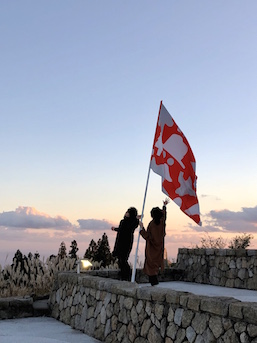
With 48 artworks spread out across 12 areas, we recommend taking two days to experience all of the art. Cars are allowed on Mt. Rokko, but there are also walking paths and public transportation. The mountain is best accessed by a cablecar from Rokko Cable Shita Station. This area guide can help you plan your route. The ¥2500 multi-day passport also comes with a map.
This year’s program includes The Night Museum, a special after-sundown event with gardens and artworks illuminated around the mountain. The leaves are about to change colors, making now the perfect time to witness this autumn evening spectacle.
The nearby hotspring town of Arima Onsen also rewards visitors with a brand new festival: Arima Art Night. This free event from 17:00 to 22:30 nightly lets you roam the atmospheric streets while taking in augmented reality that interacts with the scenery. Rokko Meets Art, The Night Museum, and Arima Art Night all run through November 23.
By area, let’s take a look at some of the creativity on show this year:
Rokkosan Silence Resort
Rokkosan Silence Resort, now home to restaurants, galleries, and meeting spaces, has recently been converted from the Rokkosan Hotel, a Heritage of Industrial Modernization site built in 1929 and renovated by the Italian architect Michele De Lucchi. This elegant space hosts the works of four Rokko Meets Art artists.
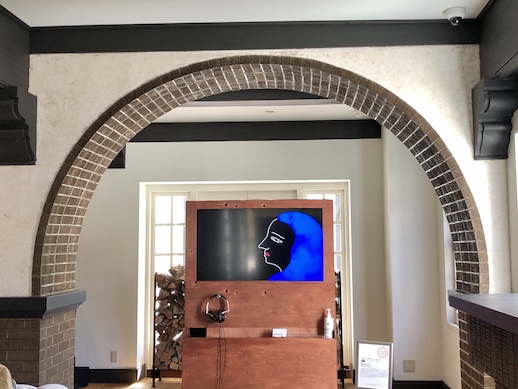
Ikuya Takahashi is a talented animator represented at multiple Rokko Meets Art venues. At Rokkosan Silence Resort, he presents an animated film on two screens framed by the brick arches of the lounge.
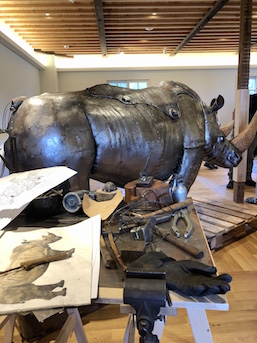
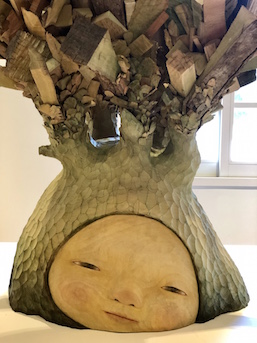
Nozomu Uchida crafts steam punk-esque metal sculptures that highlight the special abilities of animals. He is married to Moe Nakamura, a star artist at Rokko Meets Art this year. Nakamura’s paintings, drawings, and camphor carvings of enigmatic, childlike characters feature trees and other motifs from nature.
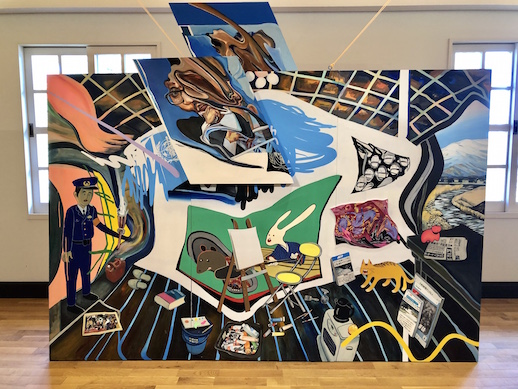
Rokko Cable Area
The cablecar terminal Rokko Cable Sanjo Station, an Art Deco-style building from 1932, displays works by a group of artists from Germany in exchange with the Kobe-based artist collective C.A.P.

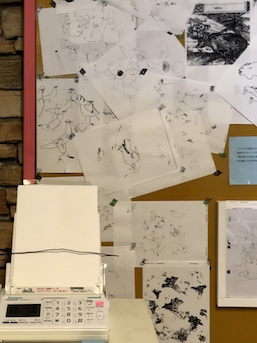
Alexander Böll has installed eight sets of small lights and speakers in one of the building’s stone nooks. Listen in closely and you can hear their sounds fluctuate with the light. Anna Schilling pays tribute to Japan’s culture of faxing by transmitting her drawings directly from Germany.
Chapel of the Wind Area
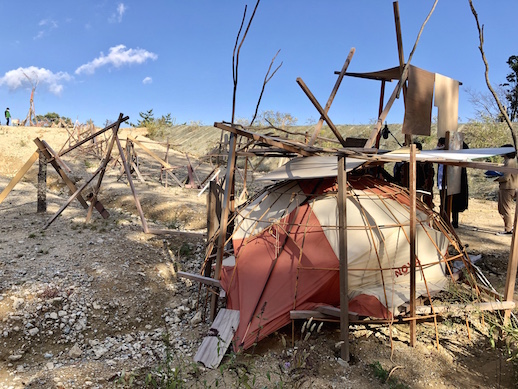
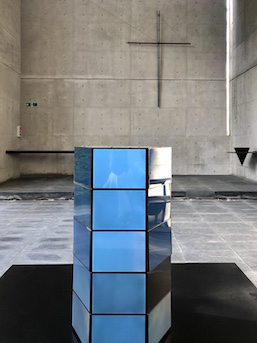
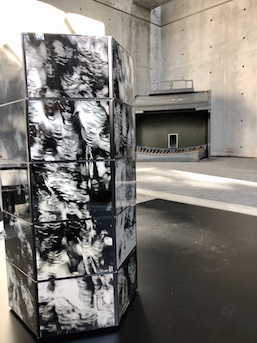
This year, Chapel of the Wind contains a sculpture with rotating video by Daisuke Yamashiro. This work brings the outside indoors with images of the sky, rain, and trees recorded on Mt. Rokko.
Grand Hotel ROKKO SKYVILLA
The Kobe-based non-profit C.A.P. (The Conference on Art and Art Projects) has converted the Former Guesthouse Grand Hotel Rokko Skyvilla, not used in a decade, into a five-story house of art with works by about 30 artists installed in its rooms and halls.
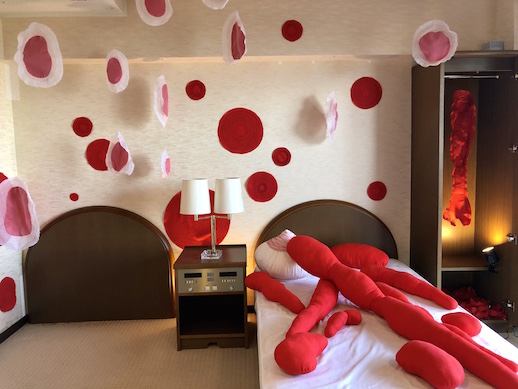
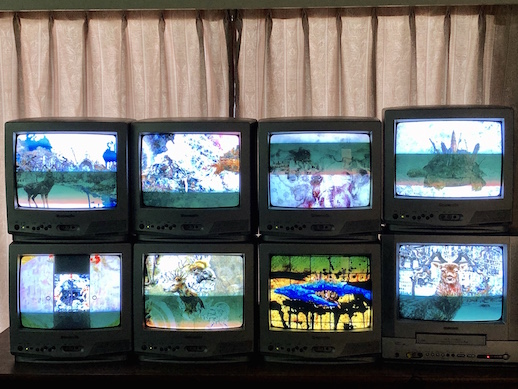
Rokkosan Country House
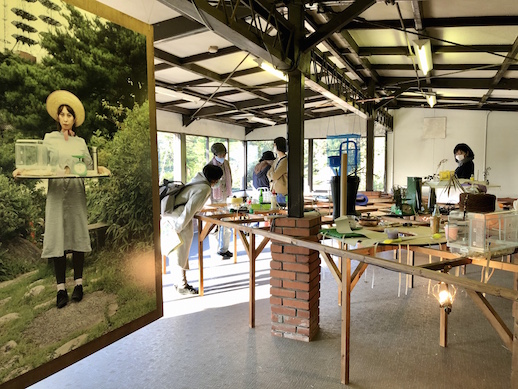
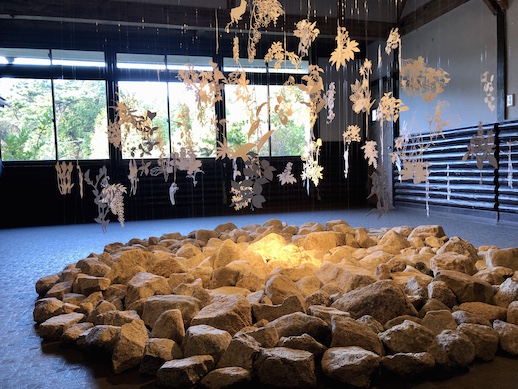
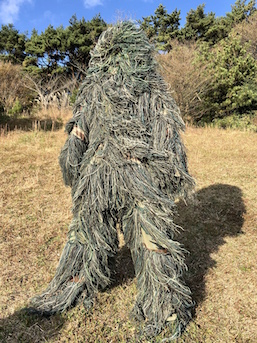
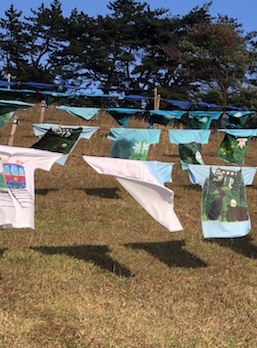
For ‘green on green,’ KIMU has assembled an army of identical creatures with green “hair” made from camouflage outfits. The work asks what it could be like for humans to see the world from the viewpoint of nature. Also on the hills of the Rokkosan Country House, T-shirts decorated with popular Mt. Rokko sights float in the breeze. The shirts were made by members of the Osaka Prefectural Tennoji High School art club.
Rokko-Arima Ropeway Rokko Sancho Station
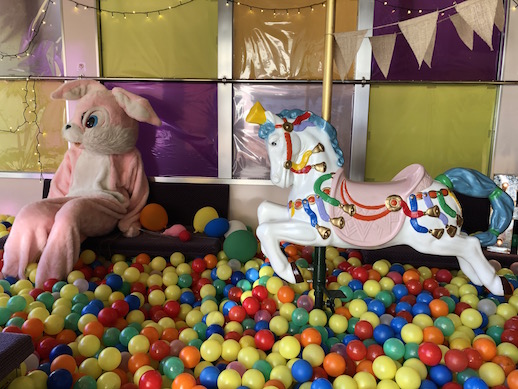
Rokko Garden Terrace Area

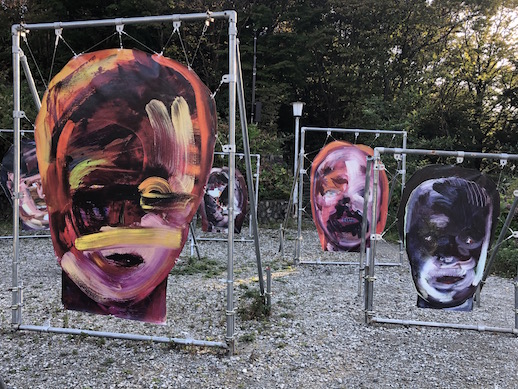
The Night Museum
Rokko Alpine Botanical Garden & Rokko International Musical Box MuseumThe Night Museum, which can be enjoyed from sundown, is spread out across the Rokko International Musical Box Museum, Rokko Alpine Botanical Garden, Rokko-Shidare Observatory, and Rokko Garden Terrace Area. Be sure to borrow a lantern at the west entrance of the Rokko Alpine Botanical Garden before winding your way around the pond while viewing the illuminated artworks and color-changing light displays.
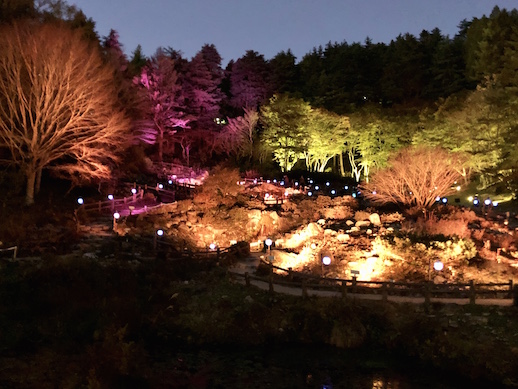
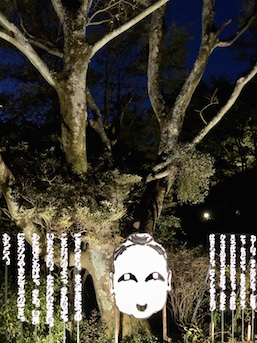
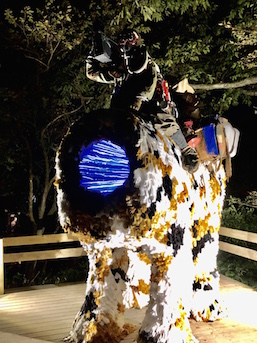
Installed in matsu pine and enoki nettle trees, “echoes” by artist Sawako Tanizawa and novelist Kaori Fujino combine visual and literary art. “Survivor Grandma” by the two-person unit CLEMOMO is a powerful matriarch astride a furry, light-emanating beast. Carrying weapons and wine, “grandma” is equipped for the apocalypse.
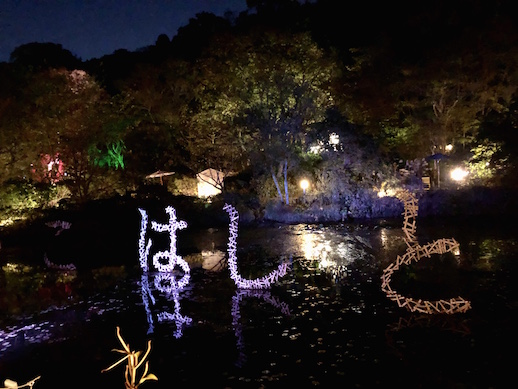
JR Shin-Kobe Station
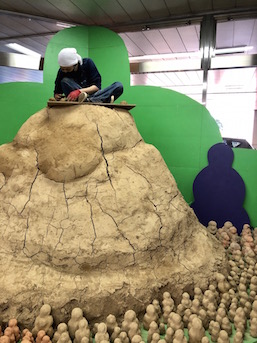
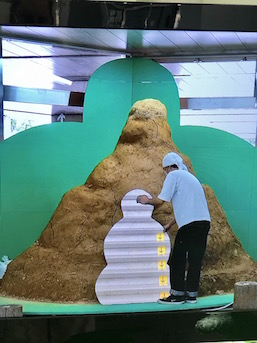
JR Shin-Kobe Station presents work by Kohei Maeda, winner of the 2019 Kobe Meets Art Mayor’s Prize. “Itomu” is an installation centered on Thai protective figures by the same name, which Maeda has formed out of clay. He creates these works onsite each weekend from 12:00–17:00. A film shows Maeda carrying a video screen itomu around some of Kobe’s well-known spots.
Arima Onsen Area
The Arima Onsen area, famous for its hot springs, features the work of three Rokko Meets Art creators: Takeshi Kimura, Canaco Matsumoto, and Hiroko Kubo.
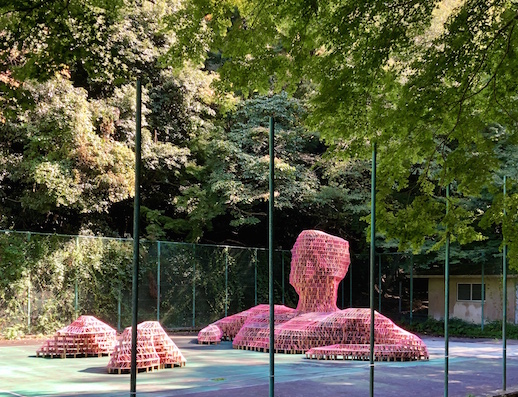
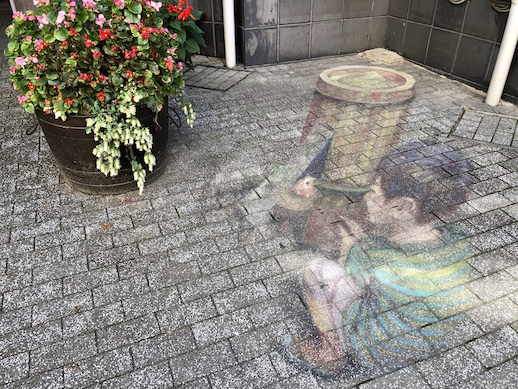
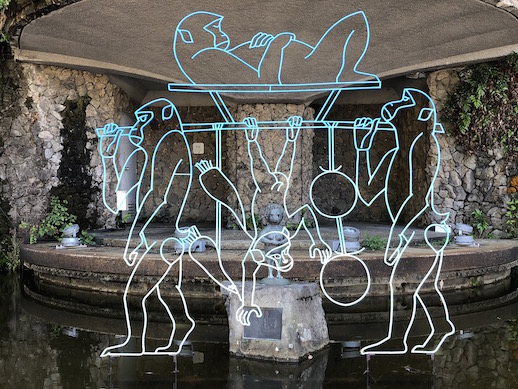
Arima Art Night
This year marks the first Arima Art Night. All you need to enjoy this augmented reality art festival is your phone. Download the free app for iOS or Android and let it guide you to designated spots around Arima after dark. The app (Japanese only) also has useful information on restaurants, hot springs, and other local sites.
Look for signs on the sides of streets and use the QR codes to activate app features. Then, align the AR images with what you see outside, follow the instructions on the screen, and let the colorful art unfold before your eyes. The artwork is designed by Akira Okamoto and Mugi Nakajima.
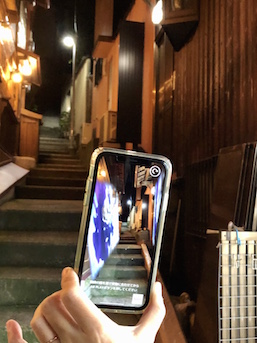
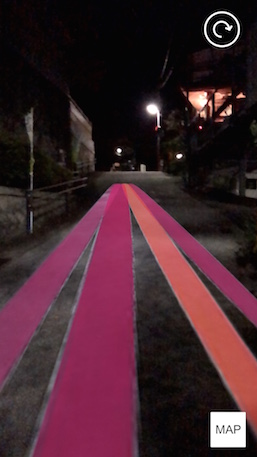
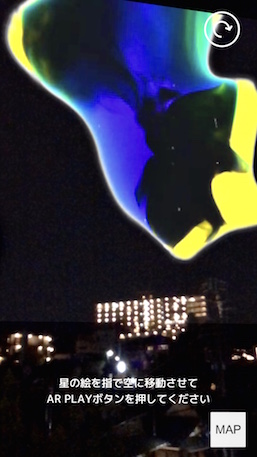
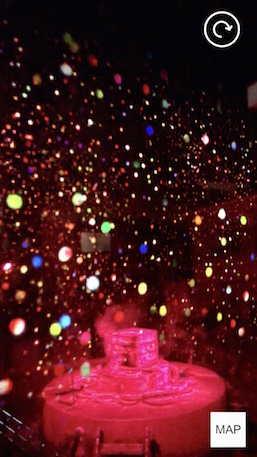
The charming historic town of Arima Onsen, known for its copper-colored hot springs, is only about thirty minutes from JR Shin-Kobe Station or fifteen minutes from Rokko-Arima Ropeway’s Rokko Sancho Station, making it the perfect place for an overnight stay while enjoying Rokko Meets Art. Hiking trails are also accessible from Arima Onsen and the timing is excellent for fall foliage. Why not take advantage of Go to Travel campaigns and enjoy hot springs along with an established and a brand-new art tradition?



